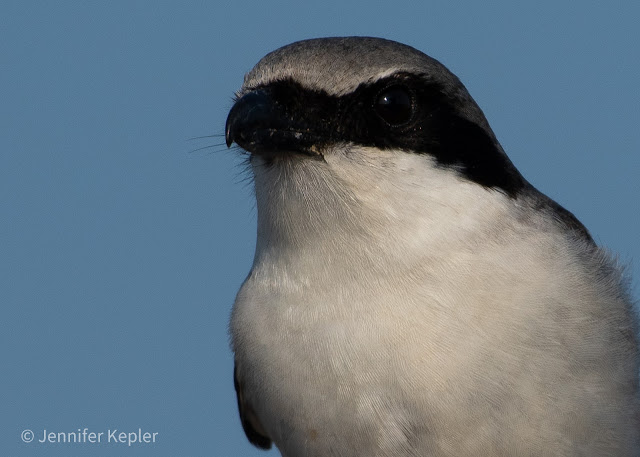Whenever we visit, I love going to Merritt Island. My husband is obliging and kind enough to be my bird safari driver along the wildlife drive, putting up with my constant "stop! a little tiny bit clos.... STOP!"
It's a gorgeous place with many other trails to visit, but the wildlife drive alone is a legitimate bird safari and I highly recommend, especially if there are non-bird people in your company. This place even provides enough razzle dazzle for the non-birder. Gators are also plentiful and easy to spot among the birds which are close enough for easy viewing. Also, important to recognize is the ability to drive or be in a car, makes it incredibly accessible for those who have limited mobility or cannot be on their feet for a long time.
Every time I visit it's always a bit different, making it very exciting each and every visit. I think maybe our next visit, Kestrel may be able to handle this little outing and I look forward to it!
 |
| We were welcomed by a tricolored heron to the wildlife drive. |
 |
| Anhinga are easy to spot when they are drying their wings in the mangroves and shrubs. They are also very funny in that they are easy to also spot soaring among the vultures. |
 |
| Unlike my other visits here, the water in many parts of the wildlife drive were totally dried up and devoid of birds. This small muddy area did have one bird that my wonderful husband spotted, a Wilson's Snipe. |
 |
| It was very busy feeding and probing the mud for any goodies it could find. |
 |
I love the contrast in the white ibis to the glossy ibis. You can see on their wings how they get their name.
The white ibis are like a mix of squirrel and pigeon. They are likely to sneak scraps of your meal underfoot as they are likely to ump up onto the table and scoop up any crumbs or table fries. |
 |
| A little blue heron comes up lucky with its catch. The entire drive is shouldered by a water-filled ditch always with birds in it, and fish too, apparently! |
 |
| This tricolored heron was displaced by a smaller little blue heron and it made a racket about it. |
 |
| Part of the rail family, this common gallinule sports the crazy feet characteristic of this family. |
 |
| Another anhinga resting in the mangroves. |
 |
| And taking a look at any delicious treats swimming by in the water below. |
 |
| One of the many gators along the wildlife drive. This one was a pretty big one. |
 |
| A very fun sight was like 200 or so American coots i a large raft just splish-splashing around. |
 |
| I also like coming to Merritt Island because you get to see the American White Pelicans reliably here. This time we were lucky to see one fairly close, floating along the water. |
 |
| Truly, white ibis always look like they have seen some shit... |
 |
| A lovely treat, a turkey vulture, perched fairly low. I think they are gorgeous. |
 |
| Glam. |
 |
| Perfection. |
 |
| Whenever you visit Merritt Island NWR, always visit their main visitors center and walk around back to the feeders for a rainbow treat. |
 |
| I only learned this last year that you are nearly guaranteed painted buntings back here on these feeders. |
 |
| If you get into any trees in the refuge, this time of year, they were crawling with Northern Parulas. |
































































